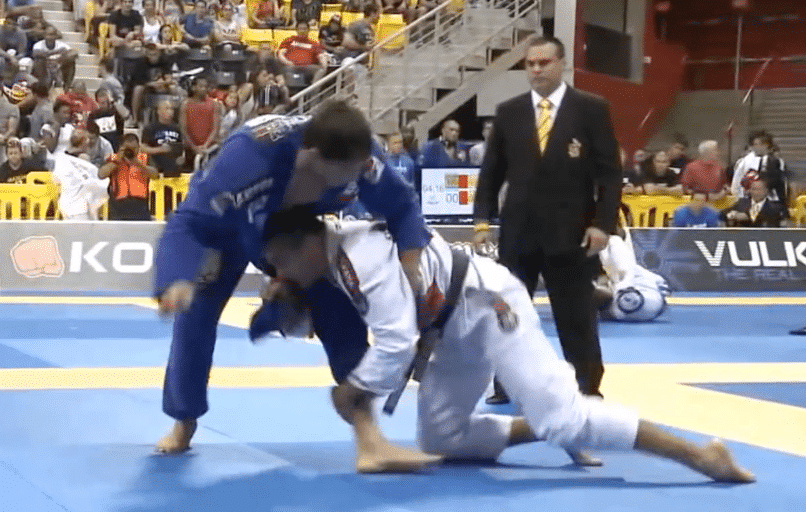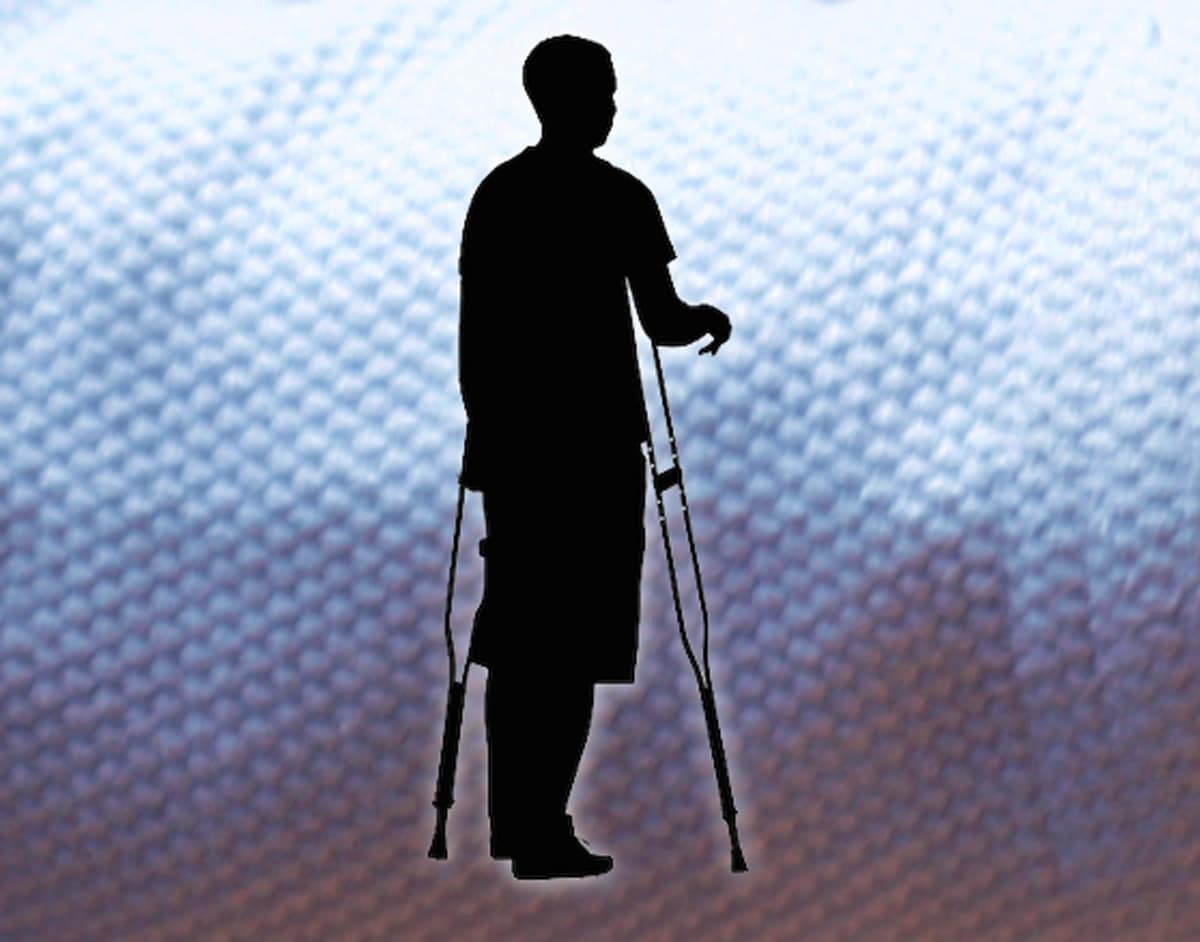
by Jeff Meszaros
In many ways, wrestling and Brazilian jiu jitsu are total opposites. The core concepts of the two sports run against each other, and what’s a great idea in one art is often a terrible idea in the other.
In wrestling, you do anything you can to avoid having your back put on the mat. But in Brazilian jiu-jitsu, people will often fall to their backs immediately to “pull guard” and fight from the bottom. No wrestler in their right mind would ever do that.
In wrestling, a grappler who is in danger of being pinned on their back will put their belly to the mat and spread their limbs out. This makes it hard for an adversary to pin you but, in jiu-jitsu, this is the worst thing you could do since it opens the door to choke holds, joint locks and strangles; which are all no-no’s in wrestling.
Actually, in wrestling, it’s illegal to “submit” your opponent. You can’t choke anyone or make their joints bend in any way to cause joint damage. In jiu-jitsu, that is often the top priority over anything else and competitors will do anything they can to bring about their enemy giving up or “tapping out” as it is commonly known.
With these ideas in mind, you wouldn’t think that either sport has much to lend the other.
But wrestling has quite a few moves that jiu-jitsu players can use successfully in BJJ tournaments, MMA matches or even in street fights.
Some are takedowns, some are reversals or escapes on the ground, made to turn the tables on an adversary, and some are set-ups, designed to create openings for takedowns and throws but easily adapted to open the door for submissions. You might already know a few, while others might be a helpful addition to your toolbox.
1, Double Leg Takedown
The argument could easily be made that the double leg takedown is not exclusive to wrestling. After all, you’re able to find it in judo, sambo and many other grappling arts. But wrestling, more than any other system, takes the double leg to the next level with a deeper look at the details, set-ups and strategy.
While there are many ways to do it, each version shares some basic common points. First, you need to bend at the knees to change levels while your head makes contact with the outside of their hip. Bending at the waist won’t give you the explosive power to penetrate forward. Then ram your shoulder into the belly of your adversary. At the same time, grab both their legs behind their knees and forcefully pull on them to break their balance.
Once you’ve done this, keep your back straight and your head up. Some people prefer to drive forward and land in their opponents guard, while others will take a step with their back leg to create an angle, look across their opponents back and land in side control.
2, Single Leg Takedown
Properly done, the entry for the single leg takedown isn’t all that different from that of a double leg. You bend you knees and collide into them to disrupt their balance. The difference, though, is that single legs are done with your head on the inside of the hip, rather than the outside. And your shoulder hits the hip rather than the belly. Also, as the name indicates, it involves grabbing just one leg instead of two.
Once you secure one of your opponents legs, you drive forward and stand up. Then, with their leg caught between yours, you step back with your outside leg in a circular way. In wrestling, they call it “running the pipe” for some reason. This causes your opponent to fall into the space you’ve created, with you standing over them in their half guard.
Get good at the single leg takedown in a wrestling context and you’ll find many ways to use it in BJJ; 5 x BJJ world champion Bernardo Faria, for example, often finishes his signature deep half guard sweeps by rolling up into a single leg and finishing it wrestling style.
3, Sprawl Defence
The double leg and single leg takedowns have a few things in common. You need to change levels, get ahold of the person’s leg, keep your head up, and circle to create the force required to take them down. Because they have this in common, defending against them is also similar. It’s called sprawling.
Essentially, sprawling is all about denying your opponent what is necessary to complete their takedown. Before they get ahold of your leg(s), you drop your hips, moving your legs back and away, lowering your weight and using your hands to push down on their head – so it isn’t as easy for them to penetrate through and finish their takedown.
A good sprawl will give a person no choice but to abandon their shot and assume the turtle or “all fours” position. In jiu-jitsu, that often means you have the opportunity to move around behind them and start to take their back.
4, Snap Down Takedown
As effective as the sprawl is in forcing your opponent to assume the turtle, it is just a defence to your opponent shooting in with a lower-body takedown. Your can’t do it offensively, or can you?
The snap down is similar to the sprawl in that it puts your adversary in the same turtle position but it can be done offensively or as a set-up for your own takedown.
It begins when your opponent has bent over, looking to defend against incoming shots. You see that they have their weight too far forward with nothing to support their forward posture from collapsing so, with your hands on the top of their head and arm, you pull them down onto their face. If done quickly and forcefully, they will drop right into the turtle position as if they’d shot in and you’d sprawled to break their posture.
Even if they resist the snap down by posturing up, this gives you a great opportunity to shoot in for your own lower body takedown. This is why you see the snap down so often in freestyle wrestling and why you can make it a valuable addition to your jiu-jitsu.
5, Peek Out / Sit Through Escape
Let’s say you’ve shot for a double-leg or single-leg takedown and your opponent has sprawled. Or they’ve snapped you down and now you’re stuck in the turtle position. What can you do? Sit through and peek out!
Just as the sprawl is your go-to counter to lower-body takedowns, the sit through is the counter to the sprawl. First, you get your head out from under your opponent and get your ear against their hip. Then, you step your foot forward on that same side and get your knee off the mat. Finally, you post up on your opposite side arm and kick your other leg through to slide out from under your adversary and create an entirely new angle you can use to finish your takedown or attack their back as they are now in the turtle, with you beside them in a strong attack position.
6, Granby Roll Escape
The Granby roll is a fairly unusual technique for wrestling as, for a moment, you are putting your back on the mat but your opponent isn’t pinning you and you’re only there for a split-second.
It’s a move that is done when your opponent is attacking while you are in the turtle position; just as they’d be if they shot in and you’d sprawled and they’d then used the sit-through to slip out from beneath you. In wrestling, they’d be looking for a way to pin you but in jiu-jitsu it would be a time for them to take your back. Now it’s important for you to escape and the Granby roll is a good option.
Essentially, the move is an explosive roll over your shoulder that is closest to your opponent. It can catch them by surprise and, although you turn upside down for just a second, their weight is, for a moment, not holding you down. This gives you a chance to escape and get to an offensive position; whether it’s your own takedown or, in jiu jitsu, using your guard.
Also if you get familiar with the Granby then the inverted movements of BJJ (like the berimbolo sweep or the upside-down jiu-jitsu of the Miyao brothers) will start seeming a lot easier to achieve).
7, Body Fold Takedown
Just as the double-leg and single-leg are two pillars of lower body takedowns, the body fold is your bread-and-butter takedown when you’re talking about upper body wrestling. Learn it properly and you’ll have a devastating new move.
While many throws in judo involve the use of over-hooks with your arms over those of your opponent’s, wrestling often uses under hooks, when your arms are below the arms of your opponent and wrapped snugly around the torso. This gives you the ability to control their balance and set up a takedown.
Essentially, the body fold is done when your adversary has made two big mistakes. First, their elbows have moved too distant from their torso and, second, they are standing much too upright. So you clamp your arms around their body with your head stuck on their chest and your leg circled around behind one of theirs. By pushing with your head and pulling back with your arms, you’re able to make their spine bend like a banana and cause them to lose their balance and fall. Done correctly, you’ll land right in the mounted position, which is often the end of fights.
8, Pummel Escape
What do you do when someone has gotten a bear-hug with both arms around your body? You use the go-to defence for upper-body takedowns: Pummelling.
First, you keep your hips back to prevent them from hugging you around the lower back and seizing control of your centre of gravity. Then, you move your hands between your chest and the chest of your opponent and slide your arms one at a time to be under theirs.
Pretend you’re brushing cookie crumbs off your chest and then giving the other person a loving hug that bends them backwards. If you can do this, you’ve turned the tables on your adversary and set up a takedown of your own. Now they have to quickly pummel to get the under hooks again … or be taken down as you’ve gotten the upper hand.
9, Switch Escape
Let’s say your opponent has hugged you around the body and has moved behind you. Now you’re in the perfect position to be thrown with a suplex. So you need some way to defend yourself but you can’t pummel since your opponent is behind you.
What do you do? It’s called the switch.
Again, you need to create separation between your hips and your opponents. But, since you’re facing away from them, this means you are moving forward while bending backwards. Also, you push down on their hands as if you’re trying to take off a pair of jeans. Once you create enough space, you reach back and grab under one of their knees, then drop your bottom to the mat. This creates enough force to break their grip and allows you to escape and take their back. From there, you better do your next move in a hurry or they’ll use the switch on you.
10, Arm Drag
Of all the moves in wrestling, none has had more of an impact on jiu-jitsu than the arm drag. Most famously used by BJJ legend Marcelo Garcia, not only can the arm drag be used while standing to set up takedowns, it can also be used while on the ground to set up reversals, sweeps, escapes and submissions.
It involves gripping the wrist of your opponent with your arm on the same side while your other hand reaches across and, from the inside, cups their arm high on the tricep. A step forward with your opposite side leg and a hard tug lets you slip past your opponent’s arm. From there, you have an angle for a variety of takedowns, like the double leg.
This move can also be used from the guard, as well as from several other positions on the ground, to take your adversary’s back. If they resist, you are usually able to turn their move into either a sweep, a choke or an armlock as they flounder to recover their lost position.
Jeff Meszaros is a Vancouver-based BJJ black belt who has written How to Avoid BJJ Injuries (and Other Dumb Ways to Die) among other articles on Grapplearts!



